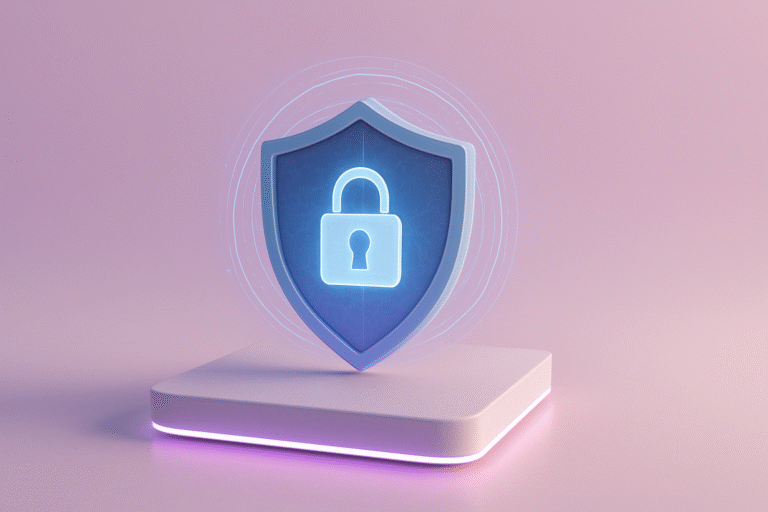What is GameFi?
GameFi is a combination of the words “game” and “finance” and refers to the integration of financial mechanisms into Play to Earn (P2E) video games using distributed ledger technologies (DLTs).
It represents a new category of decentralized applications (dApps) that allow players to enhance their experience by earning rewards and digital assets that can have real value outside the game environment. This concept gives players ownership and control over each item they accumulate in their player profile.
DLT technology provides a secure and transparent platform for the ownership and exchange of such assets. In addition, GameFi introduces elements of decentralized finance (DeFi), allowing players not only to earn assets in the form of cryptocurrencies or NFTs, but also to use them in financial mechanisms such as lending, wagering, and yield farming.
What is the P2E (Play-to-Earn) model?
P2E, or “Play-to-Earn”, is a business model within the GameFi industry that allows players to earn real-world rewards through their participation in the game. These rewards can be cryptocurrencies, non-fungible tokens (NFTs) or other digital assets. This model not only increases player engagement, but can also provide you with a potential revenue stream.
Unlike the traditional pay-to-play or play-to-win model, where players compete for in-game rewards that have no real value outside of the game, the P2E model offers players full control over their in-game assets, as well as an integrated economy that can translate into real revenue through the sale or exchange of in-game digital assets.
Features of the P2E Model
The P2E model is transforming the video game industry by enabling players to earn real-world rewards and digital assets through their participation in the game. Here are its key features and benefits:
Asset Control and Ownership
Players have full ownership of their assets, giving them unprecedented autonomy over their value and use. This ownership includes the ability to sell and transfer assets without restriction. Distributed ledger technology ensures that digital assets are secure, immutable and transparent, reducing the risk of fraud and increasing trust in the system.
Open markets
Assets can be exchanged on open markets, increasing their liquidity and value. This allows players to convert their digital assets into cryptocurrencies or other real-world financial assets.
In-Game Economy
P2E games create internal economies where players can buy, sell, and trade assets. These economies are driven by supply and demand, providing a dynamic and sustainable environment for digital asset transactions.
Rewards
Players are rewarded for their time and effort in the game, providing an additional incentive to participate. Rewards can include cryptocurrencies, NFTs and other digital assets that have real value.
Community participation
GameFi encourages the creation of communities where players can collaborate and exchange ideas. These communities are fundamental to the development and growth of game ecosystems, providing support and sharing strategies.
Interoperability
Assets can be used across multiple games and platforms, increasing their utility and value. Interoperability allows players to move their digital assets between different game ecosystems, creating a more integrated and cohesive game experience. Due to its complexity, this area is also an ongoing challenge that will hopefully be resolved soon.
Community governance
Players can participate in decision-making within the game community. Decentralized governance allows players to influence the development and direction of the game, creating a sense of shared ownership and responsibility.
Entry to the Metaverse
The metaverse, a shared, collective, persistent virtual world where users interact as avatars, is evolving alongside play-to-earn games. Distributed ledger technologies, cryptocurrencies, and NFTs are defining elements in the design of the metaverse, where virtual objects and terrains are represented by non-fungible tokens.
In addition, well-known companies such as Facebook (now known as Meta to reflect its ambitions), Adidas, Sony and Samsung, among others, have already begun to establish their presence in the Metaverse.
P2E games challenges
Price volatility
The prices of cryptocurrencies and NFTs can be highly volatile, posing a significant risk to players. Volatility can result in significant gains or losses in a short period of time.
High cost of entry
Some games require an initial investment, which can be a barrier to participation. The cost of acquiring NFTs and other digital assets can be prohibitive for new players.
Scam risks
There are risks of scams and fraud in the GameFi ecosystem. It is important that players perform their due diligence before investing in games and platforms to avoid financial loss.
Tax implications
Profits earned through P2E games may have tax implications. It is important that players understand the tax laws in their jurisdiction and comply with their tax obligations.
Interoperability
Interoperability between different games and DLTs may be limited and complex. Players may face challenges when trying to move assets between different games ecosystems and distributed registration platforms.
How do I start playing P2E (Play-to-Earn) games?
1. Check the game requirements
Before starting to play, it is important to check the specific requirements of the game. These may include:
- Hardware: Some games may require high-end equipment to run properly, such as powerful graphics cards, fast processors and sufficient RAM.
- Software: Check if you need specific operating systems, software versions or even additional programs such as updated graphics drivers.
- Internet connection: A stable and fast Internet connection is essential for most P2E games, as they are usually online and require continuous synchronization with remote servers.
- Entry price: Many P2E games require an initial investment in the form of tokens or NFTs. It is important to research the cost of these assets and whether they fit your budget before starting.
2. Create a wallet
A digital wallet is indispensable to participate in P2E games, as it is used to store cryptocurrencies and NFTs. Here we explain how to create a wallet:
- Select a suitable wallet: There are many options such as MetaMask, Trust Wallet or Coinbase Wallet. Research which one best suits your needs.
- Register and set up: Download the selected wallet and follow the setup steps, which usually include creating a password and backing up the seed phrase. This phrase is crucial to regain access to your wallet in case you forget your password.
3. Connecting the wallet
Once the wallet is created, the next step is to connect it to the video game to manage transactions and digital assets. Here are the general steps:
- Acces the game: Start the game and look for the option to connect a wallet.
- Select your wallet: Select the wallet you created earlier.
- Authorize the connection: Allow the game to access your wallet, which usually involves authorizing a transaction from the wallet interface.
4. Add funds to your wallet
To fully participate in the game, you need to add funds to your wallet, usually in the form of cryptocurrencies. Here is how to do it:
- Buy cryptocurrencies: Use a cryptocurrency exchange (such as Coinbase, Kraken or Binance) to buy the cryptocurrency that the game requires (such as Ethereum or Bitcoin).
- Transfer funds to your wallet: From the exchange, transfer the cryptocurrency to your wallet address. Make sure you copy the address correctly to avoid losing funds.
- Verify the transaction: Wait for the transaction to be confirmed. This can take anywhere from a few minutes to an hour, depending on your network.
5. Start playing
Finally, after completing all of the above steps, you are ready to start playing and earning rewards in the P2E ecosystem. Here are some recommendations
- Get familiar with the game: Spend time learning the game mechanics and strategies to maximize your earnings.
- Manage your assets: Keep track of your cryptocurrencies and NFTs, and consider ways to reinvest your earnings back into the game or other digital assets.
- Stay tuned: P2E games and the cryptocurrency market are constantly evolving. Stay up to date with news and developments to make informed decisions.
And that’s it! By following these steps, you’ll be ready to start the exciting journey of P2E games and start earning rewards in the digital world.
Conclusion
GameFi and the P2E model are transforming the video game industry, enabling players to earn real-world rewards and own digital assets. The integration of distributed ledger technologies such as blockchain into video games is creating new forms of interaction and monetization, revolutionizing the way players perceive and participate in games
Despite these advances, the future of P2E games faces significant challenges. One major issue is the economic sustainability of these games, which often depends on the steady growth of new players and the continued sale of NFTs. If player growth stops, the game economy can collapse, resulting in financial losses for players and developers.
In summary, while GameFi and the P2E model promise an exciting and innovative future for the gaming world, these challenges must be addressed to ensure sustainable and balanced development in this new era of video games.
Resources:
[1] Kraken – What are play-to-earn crypto games
[2] Technopedia – What is Play-to-Earn
[3] Decrypt – What are play to earn games
[4] Binance Academy – What is Gamefi and how does it works
At Block&Capital, experts in IT recruitment in Spain, the UK, the USA, and Andorra, we connect companies with exceptional tech talent. Our mission is to create opportunities where growth and success are within everyone’s reach. Contact us today to find the right IT talent for your company.
Last posts





